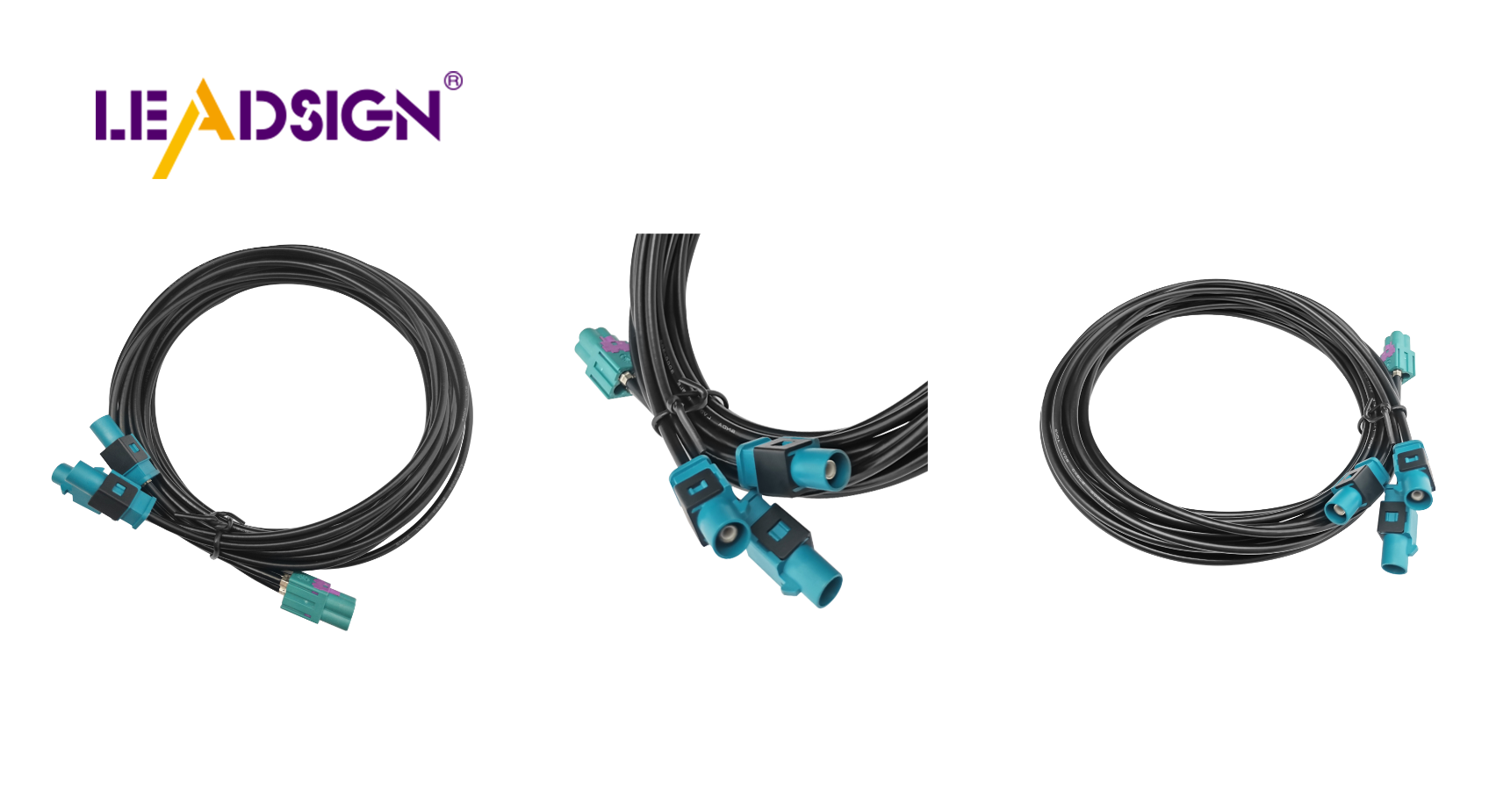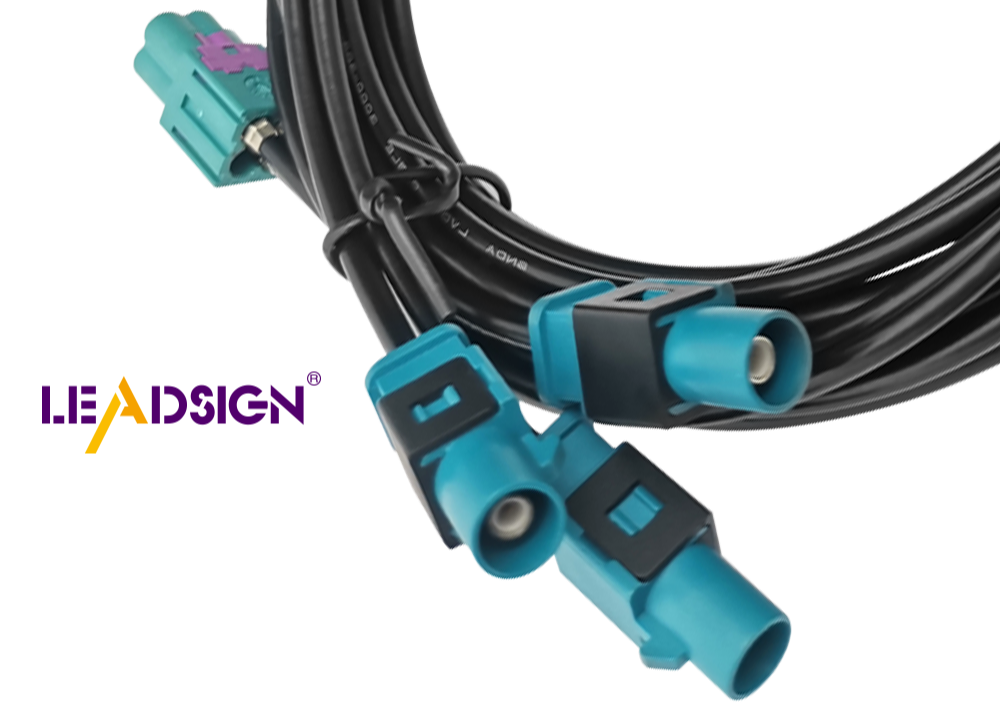How to Identify Automotive Electrical Connectors Types Quickly

Quickly identifying automotive electrical connectors types is crucial for efficient car maintenance. There are numerous types of connectors, each with a distinct appearance, making it challenging to differentiate them swiftly. Familiarity with these types saves time and reduces errors during repairs or installations. It streamlines the work process and ensures the correct connector is used every time. Mastering this skill enhances your ability to repair and maintain vehicles effectively.
Understanding Automotive Electrical Connectors Types

Knowing different automotive electrical connectors is important for fixing cars. These connectors link circuits, helping electricity flow smoothly. Let's look at the common types of these connectors.
Basic Parts of Connectors
Connectors have key parts that make sure connections are safe and work well.
Pins and Terminals
Pins and terminals are important in any connector. The pins, or male parts, fit into female sockets or terminals. They are usually made from copper, brass, or bronze because these materials conduct electricity well and resist rust. Pin size can change based on use; bigger pins handle more current.
Housings and Locks
Connector housings protect pins and terminals with insulation. They are made from strong plastic or rubber. Locks keep connections tight to stop them from coming apart by accident, which is crucial in cars where things move a lot.
Common Automotive Electrical Connectors Types
There are many types of automotive electrical connectors, each for specific uses. Here are some common ones:
Blade Connectors
Blade connectors are simple and reliable, used often in cars. They have a flat male part that fits into a matching female socket. They’re great for quick connects and disconnects, making them popular in car systems.
Bullet Connectors
Bullet connectors have a round male part that fits tightly into a female socket. They're used when secure connections matter most, like in car lights where space is tight.
Multi-pin Connectors
Multi-pin connectors connect several wires at once. They're used in complex car systems needing many connections. Their size and shape can change to fit different designs.
Knowing these basic parts and types helps you pick the right connector for your projects, making your car's electrical systems work better.
Ways to Identify Connectors Fast
Finding automotive electrical connectors quickly saves time and work. Using good methods helps you pick the right connector. Here are some tips to help you find them easily.
Looking Closely
Looking at connectors is a simple way to know their type. By noticing certain details, you can often tell what kind of connector it is.
Color Clues
Many automotive electrical connectors use colors to show what they do. Makers use colors for different power levels or signals. For example, red might mean power, and blue could mean data. Knowing these colors helps you figure out a connector's job fast without extra tools.
Shape and Size
The shape and size give hints about the connector type. They come in shapes like rectangles, circles, or squares. Bigger ones usually carry more current. By looking at these features, you can guess the type better.
Using Tools
Sometimes tools are needed to know automotive electrical connectors exactly. These tools give clear measurements to check your guesses.
Multimeters
A multimeter is key for working with these connectors. It measures voltage, current, and resistance to check a connector's electric parts. Testing continuity ensures it fits your needs.
Kits for Identifying Connectors
Connector kits help find many types of automotive electrical connectors. They have adapters and guides to match connectors with types. These kits make finding unknown designs easy and fast.
Research Findings: The need for strong connections in cars is growing fast. From sending electricity safely to checking systems, connectors are very important.
By learning these ways, you get better at finding automotive electrical connectors quickly and correctly. This skill boosts your speed and makes sure connections are right every time.
Easy Tips for Quick Connector Identification
Finding automotive electrical connectors fast needs good organization. Here are some easy tips to help you.
Organizing Connectors
Keeping connectors neat saves time and stops mix-ups.
Labeling Systems
Use labels to sort different connectors. Write clear info like type and size on them. This helps you find the right connector quickly without searching through a mess. A good labeling system means you always know what you've got.
Storage Solutions
Get storage that works for you. Use boxes or drawers with sections to keep connectors by type. This keeps your space clean and makes finding connectors easy when needed. Good storage helps your work go smoothly and stops losing parts.
Staying Updated with New Connector Types
Knowing about new connector types is key for quick identification.
Industry Publications
Read industry magazines to learn about new automotive electrical connectors. They give useful info on new tech and trends. Reading often keeps you ready for changes in the field.
Online Resources
Use online tools to learn more. Websites, forums, and courses have lots of info on connectors. Joining these helps you learn from experts, keeping you smart about new connector types and how to spot them.
By organizing well and learning new things, you'll get better at finding automotive electrical connectors fast and right every time. These habits make your work better and keep you ahead in the car world.
Identifying car electrical connectors fast is important for fixing cars well. Learn to look at them closely and use tools to choose the right one. Practice often to get better. Keep up with new connector types by reading magazines and using online resources. Knowing this helps you stay ahead in the changing car world. The right connector makes sure the car's electric system works well, making your job easier and faster.
See Also
Navigating Ford Fakra Connectors: A Comprehensive Overview
Essential HSD Connectors in Automotive: A Fundamental Guide
Significance of FAKRA Connectors in Automotive Implementations
Vital Role of Fakra Automotive Connectors in Contemporary Cars
Exploring the Power: High-Speed FAKRA-Mini Connectors in Automotive

